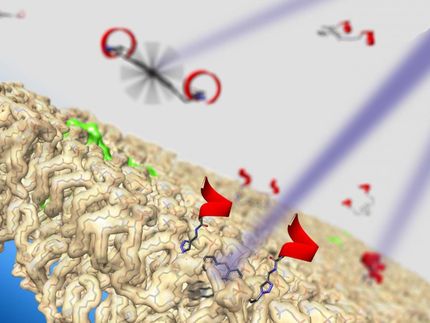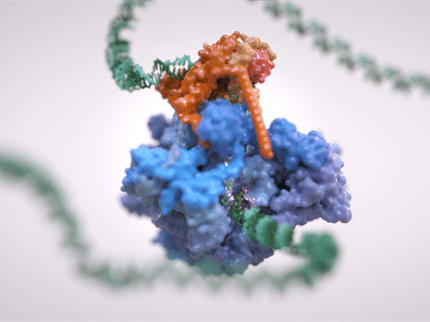German and Israeli scientists gain new insights into protein disposal
cells have a sophisticated system to control and dispose of defective, superfluous proteins and thus to prevent damage to the body. Researchers of the Max Delbrück Center (MDC), Germany, and the Technion, the Technical University of Israel in Haifa, have now discovered a new function of an enzyme that is involved in this vital process. Using yeast cells as a model organism, the researchers showed that a specific factor, abbreviated Cue1, is not only a receptor and activator for a component of the degradation apparatus, but also contributes to ensuring that the defective protein is marked with a molecular tag for degradation.
Proteins are molecular machines in the cells of an organism. Different types of proteins perform many different functions: They transport materials to their destination, ward off pathogens, enable chemical reactions in the cell and much more. Many proteins are produced in a cell organelle, the endoplasmic reticulum (ER), are then folded and subsequently transported to their destination.
Some proteins are only required for a specific, time-limited purpose and must be degraded once their purpose has been served. But errors also frequently occur during production and folding. These defective proteins are not functional and can even harm the organism. Therefore they, too, must be degraded.
The cells therefore have a sophisticated system to dispose of defective, superfluous proteins. In the ER there is a special process for protein degradation, known as ER-associated degradation (ERAD). This system contains a number of enzymes that cooperate to ensure that a defective protein is marked with a molecular tag, the molecule ubiquitin. This process is called ubiquitylation. A chain of four to six molecules serves as degradation signal. A protein tagged with such a molecular chain is transported to the proteasome, the protein-cleaving machinery of the cell, where it is separated into its components.
This ubiquitin-proteasome system is found in all eukaryotic cells; it is ubiquitous. It is one of the most complex cellular systems and protects the body from severe diseases. Defective proteins that escape this system trigger serious diseases such as Alzheimer’s, Parkinson’s, Huntington’s disease, cystic fibrosis or diabetes. The scientist who discovered this protective program is Professor Aaron Ciechanover of Technion, the Technical University of Israel in Haifa. He received the Nobel Prize in Chemistry in 2004 for this achievement together with Professor Avram Hershko (Technion) and Professor Irwin Rose (University of California, Irvine, USA).
Several enzymes must work in concert to facilitate the attachment of a ubiquitin chain to a defective protein. Some of these enzymes are anchored in the membrane of the ER, others such as the enzyme Ubc7 swim freely inside the cell. A factor called CUE1, which itself is bound to the membrane, is responsible for recruiting Ubc7 and escorting it to the enzymes at the membrane. To achieve this, it has a domain which binds specifically to Ubc7. Another domain of the factor is the so-called CUE domain. Dr. Katrin Bagola and Professor Thomas Sommer of the MDC have studied its function in yeast cells together with their colleagues Professor Michael Glickman (Technion) and Professor Ciechanover.
Fateful connection
The CUE domain is a ubiquitin-binding domain (UBD). UBDs bind to specific ubiquitin patterns. For example, they can recognize whether one or more ubiquitin molecules have been attached to a protein and how the respective ubiquitin molecules are linked together in chains. The ubiquitin pattern determines which ubiquitin domain binds to which protein and thus determines the subsequent fate of the protein.
Direct impact on molecular chain formation – Signal for protein degradation
The MDC and Technion researchers, who have collaborated closely for many years, showed that the CUE domain of the factor Cue1 binds to ubiquitin chains that are linked together via a specific building block of the individual ubiquitin molecules. These chains subsequently serve as a degradation signal for proteins. In addition, the researchers found that the CUE domain also has a direct impact on the length of the ubiquitin chains: If the CUE domain was lacking or limited in its function due to a mutation, the ubiquitin chains developed more slowly and were shorter in length. Apparently, the CUE domain stabilizes the ubiquitin chains, allowing additional ubiquitin molecules to be attached more easily.
In yeast cells, the researchers found that the CUE domain of Cue1 in this way actually affects how effectively the ERAD system can degrade proteins. The researchers suspect that the CUE domain is used specifically for the disposal of proteins which are bound to the ER membrane. However, they seem to have no influence on the degradation of soluble proteins. “Our results show that a ubiquitin-binding domain can also regulate the formation of ubiquitin chains,” the researchers said. “This function was previously unknown until now.”
























































